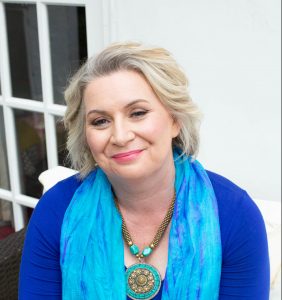Given the continued trauma being experienced across our world, I’d like to share some deeper insights into the Emotional Response Cycle – how trauma is installed and the emotional response to it.
What happens when I ask you to think of a memory from the past? In a fraction of a second, there is a lot of action in your mind and body, right?
Does it make you ask yourself why your memory haunts you, and why you feel emotions from the past? What answers do you have to these important questions? How did you find your answers? Are they the right answers? Lots of answers come from our childhood experiences, and I’ll ask you to question if you got the right answer, and I’ll give you some food for thought.
When you were a kid, did you ever play the game where someone hides something in a room and you have to find it – he calls out ‘warmer’ or ‘colder’ as you move closer or further away? Well, this – as a concept – is just how our emotions work. But instead of commonly calling them ‘warmer’ or ‘colder’, we label them as ‘positive’ and ‘negative’. That’s simple enough, but the complex piece is AFTER the event, when we are STILL feeling the emotion. And in many cases, it’s a long time after the event.
There are 4 steps to our emotional response cycle, and often we travel the cycle easily, and we do it without any conscious awareness. But what happens if the emotional response cycle gets interrupted and you continue to feel the emotions from an event that happened way back?
Four Phases to the Emotional Response Cycle
There are four main phases in the emotional response cycle:
1. Stimulus
This is the event that requires us to change our behaviour in order to move towards our goals and avoid setbacks.
2. Thought
Conscious and unconscious thinking processes take place. The mind attempts to establish what is happening, to work out what is going on, in order to create an appropriate response. It’s attempting to make sense and meaning of the situation.
3. Feeling
This phase is a physiological response. For example, fear causes our heart to beat faster, muscles to tense, hands to sweat. Facial expressions are a common physiological response.
4. Action
The fourth is the behavioural response. This is the action we take or stop taking in order to achieve our outcome.
Put them altogether: Stimulus–Thought–Feeling–Action
When functioning optimally, the emotional response will move through these stages smoothly. There will be resolution or learning. When we change our behaviour and achieve our desired outcomes, we feel good. This is stored as a memorised strategy, which we will call “learnings”, for now.
When things don’t go smoothly
But what if it doesn’t go smoothly and easily, when the cycle is interrupted, when we can’t find a new behaviour, maybe we can’t find any behaviour whatsoever. What happens if we just can’t take any action?
Or if the stimulus comes in too strongly, too quickly, it’s just too much and we can’t deal with it, and we can’t make sense of what’s happening? It doesn’t need to be a life-threatening event; it may be simply being shouted at as a child, or being teased. Something that’s happened to all of us. You know that thing when you just can’t find the appropriate response. You think about it afterwards without a problem – you can think of loads of things you should have, or could have said or done, but in the heat of the moment, nothing came.
And there’s more. What happens when we do change our behaviour and we DON’T get the results we want? And the situation gets worse and everything escalates?
What happens when we can’t reconcile what we’re experiencing? What happens when the events we are experiencing and the situation we find ourselves in is so completely overwhelming or incomprehensible?
This is what happens:
- • The emotional energy gets stuck in our nervous system.
- • A boundary is created in the neurology.
- • We can’t “process” all the steps.
- • The emotional response cycle doesn’t complete.
- • As a result, the mind loops through the memory.The mind will attempt to apply appropriate meaning and to extract the learnings from the situation.
- • Over and over and over again – Forever!
Until the mind can complete the cycle, the event will repeat in the mind. This is how flashbacks occur. This is how trauma is stored in the nervous system.
Leaving the past in the past
As an engineer, I design and build things. I love models. Exploring, researching and understanding our emotional cycle led to the design, building and testing of a process – involving skills and tools – to deal with the complexities of the interruption of the cycle and enabling the release of the trauma. Meaning that the past emotions stay in the past, and the learnings are in the present, so we can enjoy the ‘warm’ and ‘positive’ emotions. So the past stays in the past and we take the learnings to the present, so we can enjoy the ‘warm’ and ‘positive’ emotions. So that we can experience the full set of emotions as intended, enabling us to feel good, take the actions we choose, keep our balance, get the outcomes we desire. In short, to be empowered and to work for the highest good of all.
One of the training programmes I developed and teach is Conscious Emotional Transformation, which we call CET – releasing pain, trauma, negative emotions and limiting beliefs to experience a happier and more successful life. And importantly, the results are achieved quickly.
You can access this for 30 days – FREE – here: cetfreedom.com/cetfree
Imagine feeling healed and whole and complete!
Love,
If you’ve not already – check out our CETfree App! Available now on Apple and Google App Store







